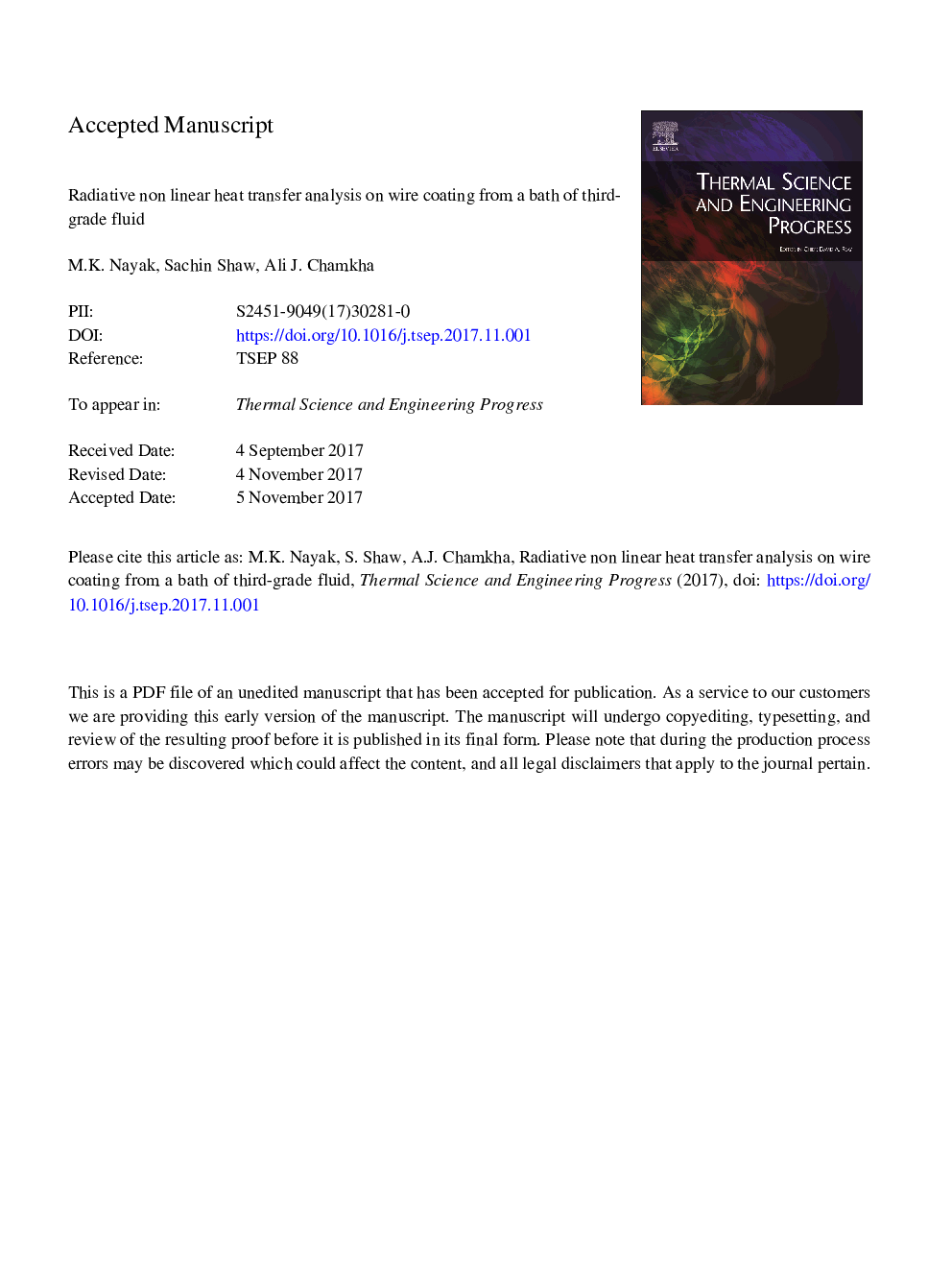| Article ID | Journal | Published Year | Pages | File Type |
|---|---|---|---|---|
| 8918764 | Thermal Science and Engineering Progress | 2018 | 31 Pages |
Abstract
Wire coating as an industrial process coats bare conducting wires for primary insulation so as to accomplish mechanical strength and provide protection for aggressive environments. In the present study, we have investigated and discussed the influence of radiative linear as well as non-linear heat transfer on wire coating with melt polymer as a coating fluid in response to a third-grade fluid model subject to Joule heating. In our analysis, we deal with (i) Reynolds model and (ii) Vogel's model to implement the temperature-dependent viscosity. The governing equations characterizing the flow and heat transfer are solved numerically by the fourth-order Runge-Kutta method. It is heartening to note that the temperature parameter ÎR is an indicator of the small/large temperature difference between the surface and the ambient fluid, which has a remarkable effect on the heat transfer characteristics and the temperature distributions in the flow region within the die. It is visualized that an increase in ÎR and the radiation parameter R decrease the fluid temperature of the coating fluid, thereby enhancing the rate of heat transfer associated with a thinner thermal boundary layer.
Related Topics
Physical Sciences and Engineering
Energy
Energy Engineering and Power Technology
Authors
M.K. Nayak, Sachin Shaw, Ali J. Chamkha,
